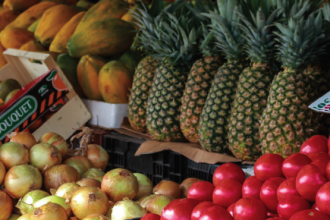The Caribbean Development Bank (CDB) says preliminary forecasts indicate that the economies of regional countries will expand by nearly two per cent in 2014, mirroring an anticipated moderate acceleration in the economies of its major trading partners.
The CBD in its annual review of the region’s economic fortunes, noted that further improvement is “currently being projected for all 19 borrowing member countries (BMCs) with most set, once again, to grow by between one and three per cent”.
The CDB said that Trinidad and Tobago is expected to be in that range, “albeit at the lower end, as unscheduled maintenance activities that have been disrupting petroleum production over the past few years are expected to come to an end”.
The region’s premier financial institution said notwithstanding current projections of continued decline in key commodity prices, “growth in export commodities should be supported by large-scale investments in gold in Guyana and Suriname that should come on stream during the year.
“Marketing arrangements already established by regional producers of bauxite, alumina and key agricultural products are also expected to positively impact the economies of those countries. However, a more rapid hike in rates of between 3.5 per cent and 4.5 per cent is being projected for Guyana, Haiti and Suriname.”
The CDB said that similarly high rates of growth are also expected in Antigua and Barbuda and St Kitts and Nevis “as the recovery in regional tourism is expected to strengthen”.
“By the same token, there are positive projections for Barbados, the British Virgin Islands, St Lucia and St Vincent and the Grenadines”.
The CDB said that the Caribbean Tourism Organization’s (CTO) expectations of continued recovery are mainly being influenced by forecasts for rising source market incomes and lower fuel costs.
It said stay-over arrivals should also be supported by negotiated airlift increases to several regional destinations, along with additional room stock and enhanced marketing associated with current investments by major hotel brands.
“Given the higher value-added of the stay-over segment of the industry, this would more than compensate for the impact of the planned return of cruise ships to Mediterranean destinations in 2015. Additional, recovery in tourism should have further spin-off benefits for construction and other real sector activity,” the CDB said.
But the bank warned of “key downside” risks to the region’s prospects, even as it noted that there are some opportunities as well.
It said in tourism, destinations that are highly dependent on the United Kingdom market may see some fallout from expected fiscal tightening and that a similar risk exists in relation to the possibility of further Euro area weakening.
The CDB notes that European visitors account for approximately 14 per cent of stay-over visitors.
For regional commodity exports, the CDB is forecasting that a major concern is still the prospects of a further decline in prices “beyond the level anticipated by the market, as this would curtail mining and quarrying output, as in 2014.
“At the same time, further reductions in oil prices could threaten the sustainability of the PetroCaribe arrangement, under which many BMCs finance petroleum imports on extremely concessional terms. This represents a tail-end risk to fiscal and debt stability,” the CDB added.
It said that in addition, growth and fiscal perspectives, the regional outlook is subject to the perennial risk of natural disasters and other weather-related challenges which, over the years, have randomly and devastatingly reversed the economic fortunes of the BMCs.
But the bank said, conversely, some of these risks also hold potential opportunities, noting for example, a reduction in commodity prices would contribute to lower fuel and energy costs, further tamping down inflationary pressures.
“It would also allow regional governments to reduce expenditure on fuel subsidies, where applicable,” the CDB said.

